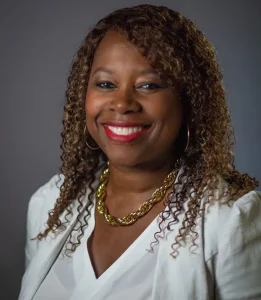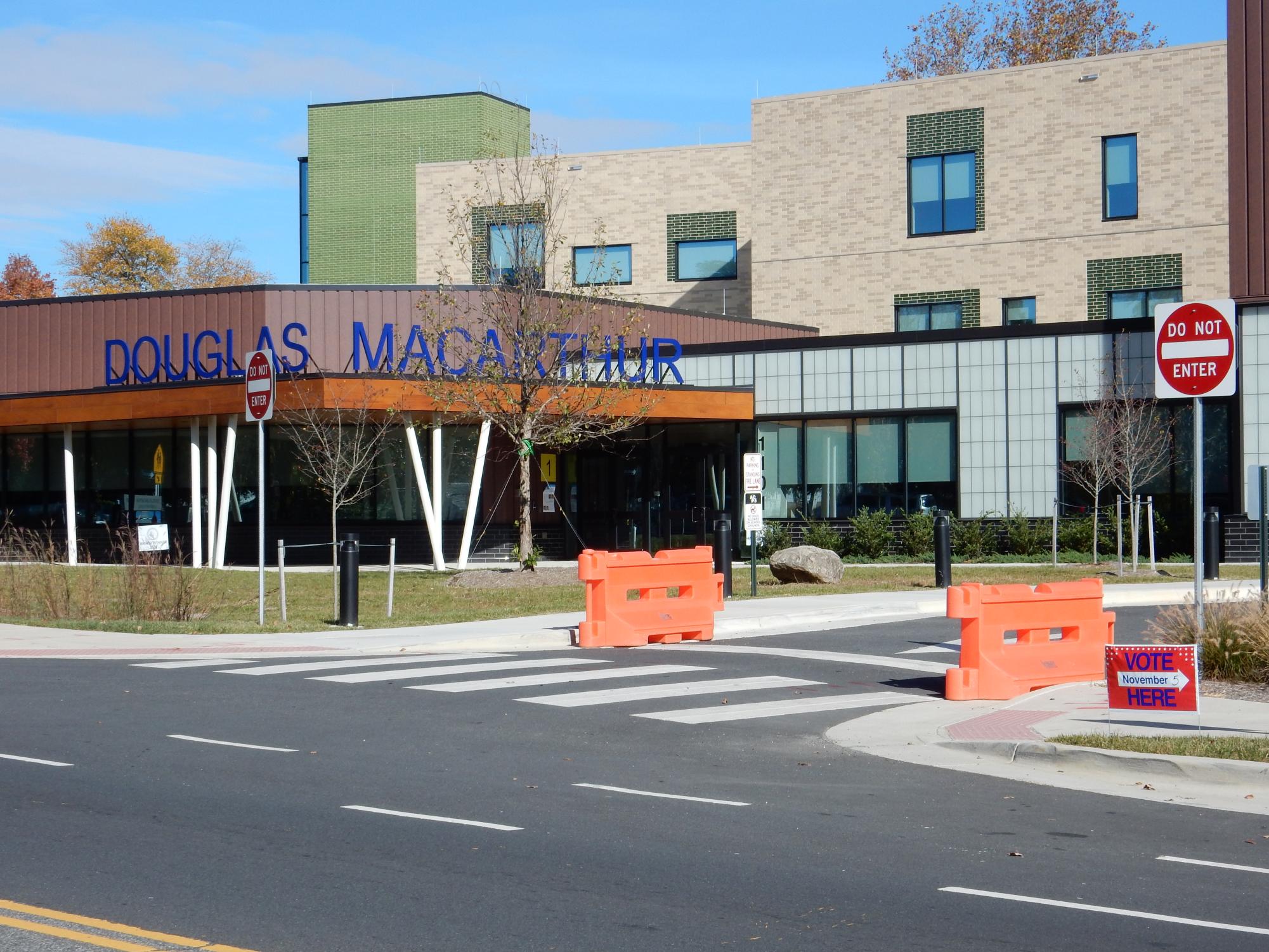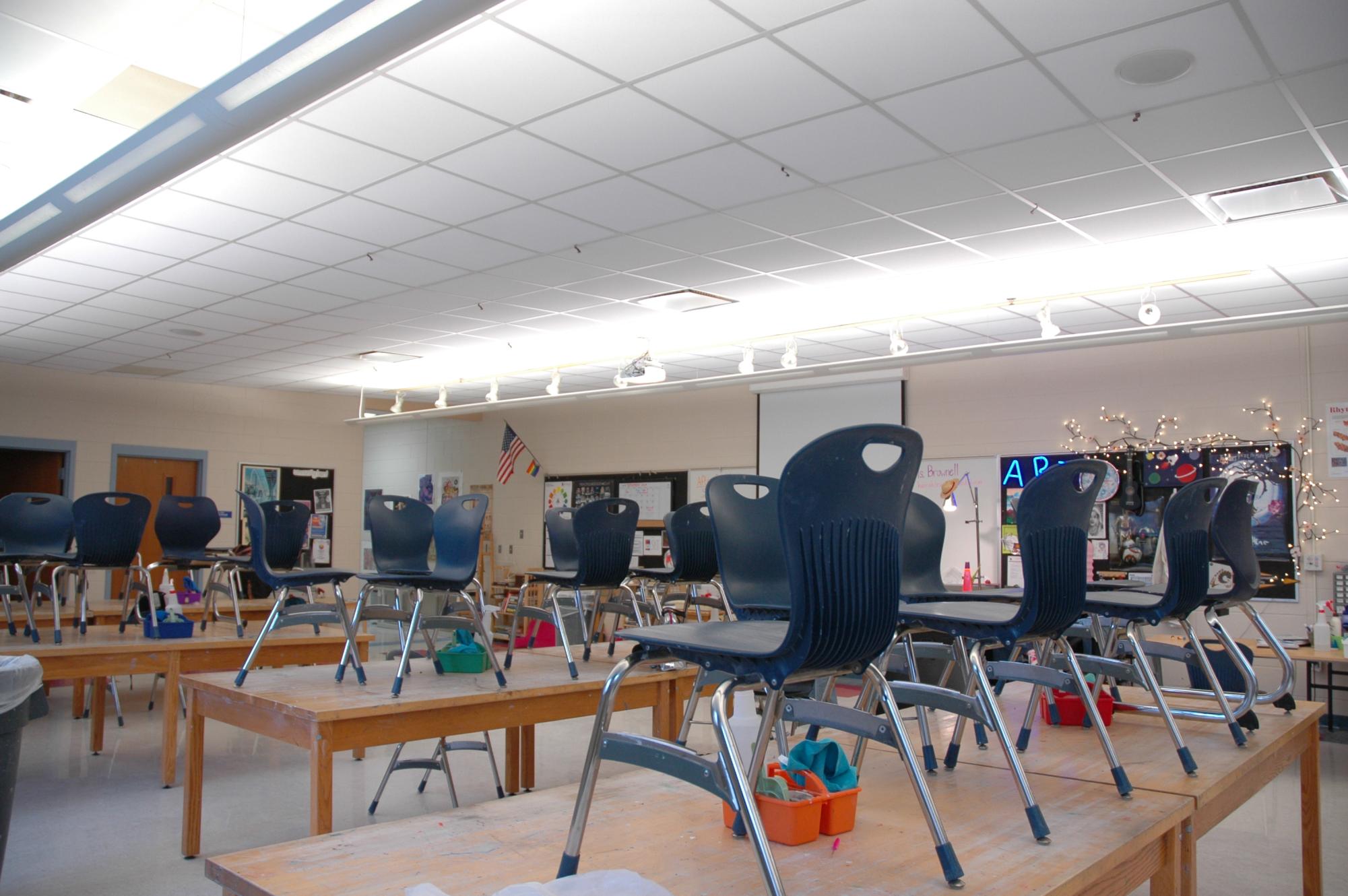According to multiple parents and district administrators, several West End elementary schools, including Patrick Henry and James K. Polk, face high occupancy rates that exceed the school district’s standard of at most 24 students per class.
Parents say they have raised the matter of overcrowding in Alexandria’s primary schools many times and that it is affecting the quality of education for their children. They also say it limits the ability for teachers to control their classrooms. Alexandria City Public Schools says it has ongoing plans to counter overcrowding, but parents and students wonder if they will be adequate.
“We’ve raised a flag on the overcrowding issues since the beginning of the last school year,” said Jakob Wolf-Barnett, a parent of a third grader at Patrick Henry. “[In] September 2023, when Patrick Henry started, we were at 114% of capacity.”
For over a year now, parents have been lobbying the school board for changes.
“The interactions that we’ve had, at least at Patrick Henry, with a lot of folks from the ACPS staff, have been deeply unsatisfactory,” said Wolf-Barnett. In their efforts with the school board, they haven’t reached a solution.

On the ACPS side, administrators say the gears are turning. Marcia Jackson, Ed.D., the district chief of student services and equity, told Theogony that the district has conducted research, and made plans to offset the growing issue. Redistricting, an idea supported by parents as well as ACPS, is currently underway.
“[Redistricting] is a multi-year process that has us look at our data, look at our school enrollments, and make determinations about our school enrollments,” said Jackson.
The district not only looks at current enrollment numbers, but also city data including growing density and birth rates. Redistricting cannot occur overnight, as there are multiple factors to be considered.
According to Jackson, the district’s chief operating officer, Alicia Hart, Ed.D., did a boundary analysis.
“She looked at building utilization and made a determination to the School Board, and the School Board then decided to do redistricting,” Jackson said. “And so since June of 2023, we’ve been working on this multi-year process of redistricting.”
The main disconnect among parents and ACPS may not be about what is being done, but the communication about both sides’ efforts. This is causing an uproar from parents because they lack in-person recognition from ACPS.
In addition, the parents say they know redistricting takes time, but they would like to see an interim solution. They argue that this issue is too prominent now to wait any longer.
Aaron Thomas, a parent of two girls at Polk, said, “We’re looking for transparency. The commitment from the superintendent is [to release enrollment data in] October, which will clarify how bad we really are as we kick off this year. We need to see the west end in the budget of these schools that are over capacity in the next 10 years.”
Many of these west end schools are Title I schools, which means they receive supplemental funds that provide assistance to school districts for children from low-income families. Thomas and other parents have noticed a perceived lack of money going towards Title I schools, seeing it being “invested in Cora Kelly and George Mason, which you can see have some extra space.”

As Jackson shared, there are many resources on the ACPS website that lay out the timeline, goals, budgets, and plans of the future redistricting. According to the redistricting process and timeline from November 2023, it was noted that “some schools currently have utilizations outside the ideal range increasing capacity reassignments.” This means the school board was aware of the problem and publicly recognized it. However, the acknowledgement may not have been forward enough for the parent population to feel they were heard.
The proposed timeline for these changes began in November of 2023, and is reported to end by the 25-26 school year. Jackson stated: “We’re also going to have an enrollment dashboard that’s being worked on right now, by our technology department that will allow a level of transparency about class sizes and things that people might have questions about.”
With the positive side of recognition, there are still problems within the school district and its set guidelines, which say no more than 24 students that can be in an elementary classroom.
Jackson specified these numbers.
“There are guidelines that we follow,” she said. “If we look at the area schools and how they’re staffed, and their class sizes, we have to consider the budget because we have to work within our budget. That’s how those things are determined. It really is based on data. It’s based on the expertise of folks from our budget office, folks from our curriculum and instruction or teaching, and learning and leading department.”
Currently these guidelines are large numbers that the parents see as an issue. Kristi Myers, who has two children at Patrick Henry, said: “Something needs to be done now. This is an essential time in children’s lives to develop reading and all the basic foundational skills they need to be successful in the future.”
As the parents feel the quality of education is facing a decline, they see students are losing their engagement in coming to school.
“I’ve seen that excitement and joy of going to school starting to diminish in a kid who really loves school,” said Myers.
With the large class sizes, it’s harder to incorporate library time and art class, especially when there’s no teacher. When school isn’t enjoyable, behavior isn’t manageable, and teachers are in high demand, many parents feel the education of Alexandria kids is in jeopardy.
“Teachers are being asked to do more at the same amount (of pay) or without additional resources,” said Myers regarding the growing class sizes. With the overcrowded classrooms, parents see the teachers have less and less control over their classes.
Myers also said her son has had nearly 10 different teachers since starting school, and he’s also been separated into three different classes. “We’ve been saying for years that the overcrowding is going to impact the teachers and now we’re seeing that there’s two teacher vacancies in the third grade and one teacher vacancy in the fifth grade.
Thomas noted: “I heard some of the parents didn’t find out until the first week of school that their kids didn’t have a third grade teacher.”
At such young ages, the parents sense the lack of foundational learning can set these kids back and impact them all the way through high school. Wolf-Barnett suggests that teachers need “some sort of retention bonus, bump in pay, especially for teachers in Title I schools, because it’s just more challenging.”
The outcry of parents hasn’t yet been answered. “There are other schools now that are actually under capacity, and so we’ve been lobbying for a solid year, between Polk and Patrick Henry to the ACPS school board to find some interim solutions,” said Wolf-Barnett. “I think parents have been very reasonable and measured how they’ve raised this, but it’s just we’re pretty far beyond what’s acceptable at this point.”

In recent school board meetings, Hart, the district chief of operations, has been asked about the overcrowding. One particular question that was raised read: “During enrollment planning meetings for the upcoming school year, how is the physical capacity of school buildings taken into consideration? For example, in some elementary schools, if all current homerooms were at the cap +2, then the school would be significantly overutilized.”
In response, Hart remarked: “The educational specification capacity is based on a measured benchmark ACPS sets for how space is utilized throughout the school and does not change year to year unless square footage is added to a school. ACPS aims to be between 90-110% utilization.”
Right now, Patrick Henry is over the utilization rate with 114%, as previously stated by Wolf-Barnett. Hart’s response, noted by the parents, didn’t directly answer the question posed, but instead voiced the benchmarks set by ACPS, benchmarks that Patrick Henry far exceeds.
The last important thing to note is the population density of Alexandria. As Daryl Johnson, Executive Director of Communications said: “There are a lot of challenges in regards to capacities, especially those that are more urban and as well as they serve high density residential areas. And so I think if you just take a look at that, especially Arlington, it’s pretty similar as we are talking about Alexandria as well, because they have many boundary challenges also.”
The difference between West End schools and other schools in Alexandria is the population density within the district boundaries. The other less populated schools are based in areas with lower densities and different types of housing. Different demographics are represented, and Patrick Henry and Polk are some of the schools with high population densities. Although ACPS can do their best, the issue isn’t all based on their decisions. There are many other factors that play into the growing population of Alexandria.




Raymond Espiritu • Sep 21, 2024 at 8:10 am
Please continue this kind of reporting. I am fortunate to have a daughter who is in STEM even though she came out of schools on the West End. And she tells me she sees more East End school kids in her AP and STEM classes than kids from West End schools.
So right there we have evidence that West End kids aren’t getting the education they deserve, and overcrowding plays a big role in that. I firmly believe West End kids can do just as well and be just as smart as their East End counterparts. They just need the resources to do so.